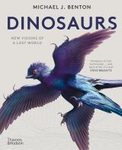Monograph Journal / Magazine
By: Maureen A O'Leary(Author), Mamadou L Bouaré(Author), Kerin M Claeson(Author), Kelly Heilbronn(Author), Robert V Hill(Author), Jacob A McCartney(Author), Jocelyn A Sessa(Author), Famory Sissoko(Author), Leif Tapanila(Author), Elisabeth A Wheeler(Author), Eric M Roberts(Author)
177 pages, 2 fold-out plates with colour illustrations; 82 colour photos and colour illustrations, 3 tables
![Stratigraphy and Paleobiology of the Upper Cretaceous-Lower Paleogene Sediments from the Trans-Saharan Seaway in Mali Stratigraphy and Paleobiology of the Upper Cretaceous-Lower Paleogene Sediments from the Trans-Saharan Seaway in Mali]()
Click to have a closer look
About this book
Customer reviews
Related titles
About this book
An epicontinental sea bisected West Africa periodically from the Late Cretaceous to the early Eocene, in dramatic contrast to the current Sahara Desert that dominates the same region today. Known as the Trans-Saharan Seaway, this warm and shallow ocean was a manifestation of globally elevated sea level associated with the rapid break-up of the supercontinent Gondwana in the late Mesozoic. Although it varied in size through time, the Trans-Saharan Seaway is estimated to have covered as much as 3000 km2 of the African continent and was approximately 50 m deep. The edges of the sea were defined in part by the high topography of the Precambrian cratons and mobile belts of West Africa. Over its approximately 50 million year episodic existence, through six major periods of transgression and regression, the Trans-Saharan Seaway left behind extensive nearshore marine sedimentary strata with abundant fossils. The waters that yielded these deposits supported and preserved the remains of numerous vertebrate, invertebrate, plant, and microbial species that are now extinct. These species document a regional picture of ancient tropical life that spanned two major Earth events: the Cretaceous-Paleogene (K-Pg) boundary and the Paleocene-Eocene Thermal Maximum (PETM). Whereas extensive epeiric seas flooded the interior portions of most continents during these intervals, the emerging multicontinental narrative has often overlooked the Trans-Saharan Seaway, in part because fundamental research, including the naming of geological formations and the primary description and analysis of fossil species, remained to be done. We provide such synthesis here based on two decades of fieldwork and analyses of sedimentary deposits in the Republic of Mali. Northern parts of the Republic of Mali today include some of the farthest inland reaches of the ancient sea.
We bring together and expand on our prior geological and palaeontological publications and provide new information on ancient sedimentary rocks and fossils that document palaeoequatorial life of the past. Ours is the first formal description of and nomenclature for the Upper Cretaceous and Lower Paleogene geological formations of this region and we tie these names to regional correlations over multiple modern territorial boundaries. The ancient seaway left intriguing and previously unclassified phosphate deposits that, quite possibly, represent the most extensive vertebrate macrofossil bone beds known from anywhere on Earth. These bone beds, and the paper shales and carbonates associated with them, have preserved a diverse assemblage of fossils, including a variety of new species of invertebrates and vertebrates, rare mammals, and trace fossils. The shallow marine waters included a wide range of paleoenvironments from delta systems, to hypersaline embayments, protected lagoons, and carbonate shoals.
Our overarching goal has been to collect vertebrate fossils tied to a K-Pg stratigraphic section in Africa. We provide such a section and, consistent with prior ideas, indicate that there is a gap in sedimentation in Malian rocks in the earliest Paleocene, an unconformity also proposed elsewhere in West Africa. Our phylogenetic analyses of several vertebrate clades across the K-Pg boundary have clarified clade-by-clade species-level survivorship and range extensions for multiple taxa. Few macrofossil species from the Trans-Saharan Seaway show conspicuous change at either the K-Pg boundary or the PETM based on current evidence, although results are very preliminary. Building on our earlier report of the first record of rock-boring bivalves from the Paleocene of West Africa, we further describe here a Cretaceous and Paleogene mollusc fauna dominated by taxa characteristic of the modern tropics. Among the newly discovered fossil osteichthyans, large body size characterizes both the pycnodonts and a new freshwater Eocene catfish species, one of the largest fossil catfishes found in Africa. Our new palaeoecological and faunal reconstructions show an evergreen, broadleaf forest that included some of the oldest mangroves known. The ancient Malian ecosystem had numerous apex predators including Crocodyliformes, Serpentes, and Amiidae, some of which were among the largest species in their clades. The Trans-Saharan Seaway exhibited intermittent isolation from major seas. This environmental variable may have created aquatic centres of endemism, stimulating selection for gigantism as previously observed for species on terrestrial islands.
Customer Reviews
Monograph Journal / Magazine
By: Maureen A O'Leary(Author), Mamadou L Bouaré(Author), Kerin M Claeson(Author), Kelly Heilbronn(Author), Robert V Hill(Author), Jacob A McCartney(Author), Jocelyn A Sessa(Author), Famory Sissoko(Author), Leif Tapanila(Author), Elisabeth A Wheeler(Author), Eric M Roberts(Author)
177 pages, 2 fold-out plates with colour illustrations; 82 colour photos and colour illustrations, 3 tables













































